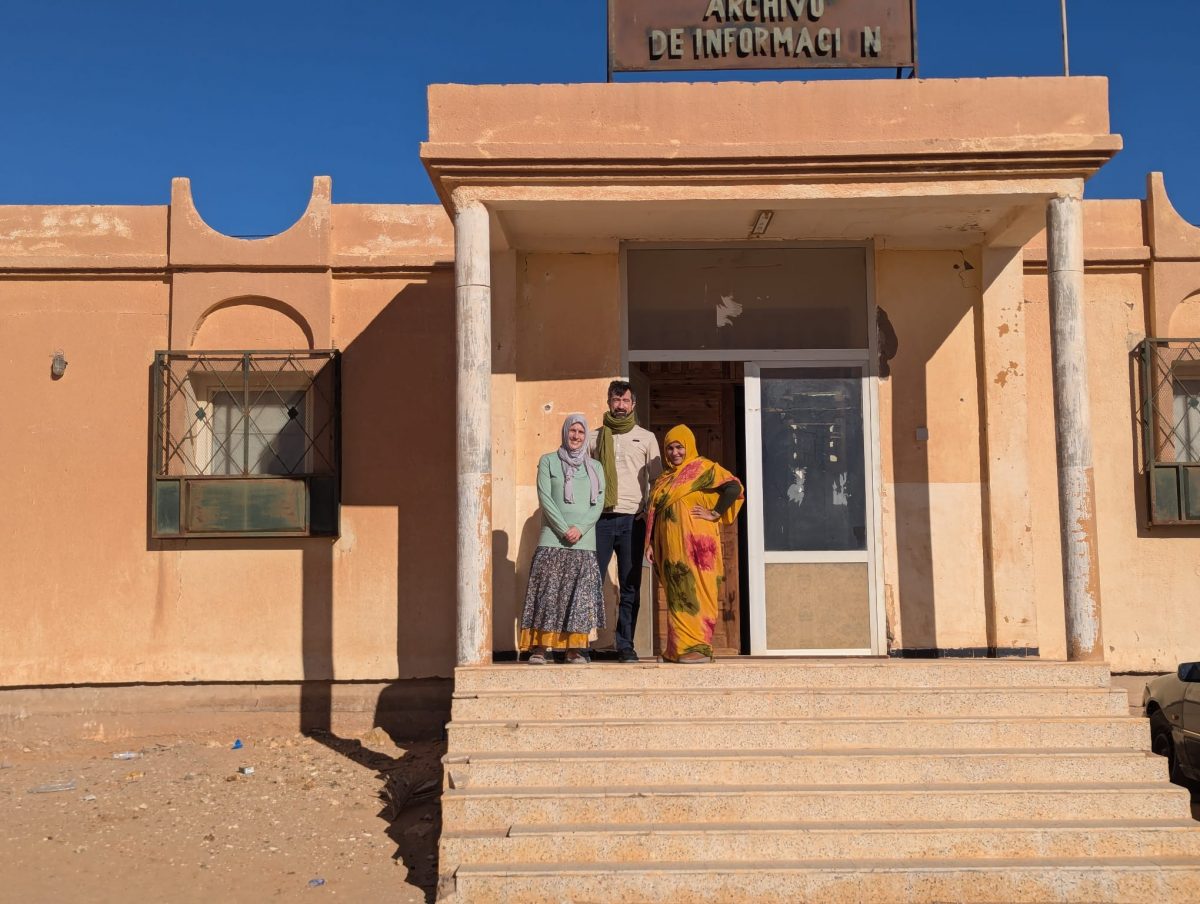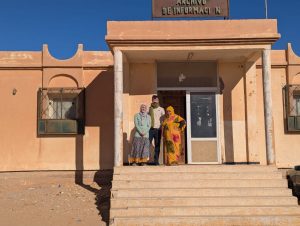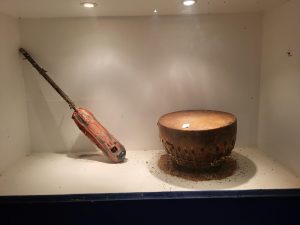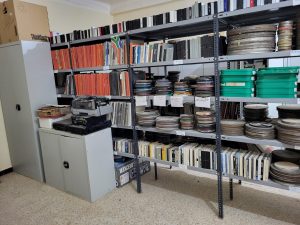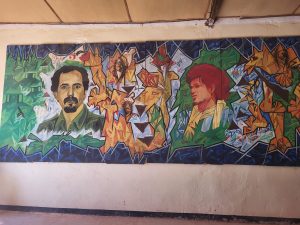The Fitzsimmons Diary is a recent assession obtained by the Archives and Special Collections Center. Who was he?
LeRoy (Roy) G. Fitzsimmons was born 1915 June 1, one of ten children born to John F. (1867-1958) and Alice Brown (1873-1941) from 50 Leslie Street, Ward 16 of Newark, New Jersey. He is mostly remembered as having served on the MacGregor Arctic Expedition (1937 July 1-1938 October 4) and as a member of Richard Evelyn Byrd Jr.’s third expedition in the United States Antarctic Service Expedition (1939-1941) working in the Rockefeller Mountains where a peak bears his name.
While his name may be attached to these expeditions and even the Carnegie Institution where he was trained in magnetometry and on the operation of magnetic equipment with C.J. MacGregor in June of 1937 1 , Roy Fitzsimmons was first and foremost a Pirate of Seton Hall College who graduated in 1937 with a Bachelor of Arts in Physics.
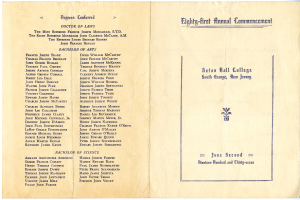
Much like the Seton Hall University of today that encourages students to partake in activities, Seton Hall College in the 1930s also encouraged their students to take part in student activities. The course catalog from 1937 lists:
The Student Council
The Setonian
The Dramatic Society
The College Glee Club
The Schola Cantorum
The Brownson Club
The Athletic Association
The Orchestra
The Society for the Propagation of the Faith
The Altar Society
The Press Club
The Photography Club
Catholic Activities Club
The Pre-Medical Seminar
Le Cercle Francais
The Chess Club
While this is the official listing from the 1937-1938 course catalog 6 , there was also the Chemistry Club, which shows up in the Setonian throughout the 1930s. Due to the Great Depression there was no yearbook printed between 1934-1938 which makes it difficult to fully understand the extent of student activities being offered and how Fitzsimmons might have participated.
However, the Setonian 7 was able to capture some of the student activities taking place. While the Archives and Special Collections Center does not have all the copies published during the 1930s, the ones they do have contain enlightening insights into Seton Hall during the Great Depression. According to a Setonian published on 1936 December 17, Roy Fitzsimmons participated in a theater production, Breezy Money. And in his final year as a senior he was in a one act play The Master of Solitaire according to a 1937 February 25 issue.
In another Setonian published 1937 June 2 in the Senior Who’s Who column, Roy Fitzsimmons was known as:
FROID-Has penchant for best sellers…Only $1500 between him and North Pole…The class chemist…Will be remembered as Press Agent deluxe in “Breezy Money”.
Ambition: Psychologist.
Prediction: Psycho-Analyst.
While Fitzsimmons may have not made it directly to the North Pole or became the psychologist he wanted to be or the psycho-analyst his fellow classmates predicted, he did become an arctic explorer and accompanied well known explorers on their expeditions not only into the Arctic but to Antarctica as well. His diary details one part of his expedition of the MacGregor Arctic Expedition from 1938 March 20-1938 July 31, including meteorological data for September 1937 and May 1938. Included in the pages are phantom silhouette marks of plants that once called the pages home but have long since been removed.
In an oral history facilitated by Rutgers University for the Rutgers Oral History Archives of World War II, Robert Inglis in an interview dated 1998 October 27 with G. Kurt Piechler and Michael Ojeda, talks about being a Boy Scout. He specifically talks about how during an Order of the Arrow Banquet, he approached C.J. MacGregor, who he had met previously in Wyoming, about joining MacGregor’s expedition. Inglis then states:
“It wasn’t too long afterward that I got a letter from Mr. MacGregor that if I was interested in being a Boy Scout on the expedition he would be glad to take me along. That’s how I got to go to Greenland on an Arctic expedition. I was seventeen years old, didn’t know any better. It was one of those experiences that you would pay one million for, but wouldn’t do again for $1 million” 4 .
Further on in the interview, Inglis mentions Roy Fitzsimmons setting up a magnetometer that needed to be anchored to solid rock to avoid vibrations. A magnetometer is a delicate instrument, consisting of magnets attached to mirrors suspended on threads with a light beam directed at the mirrors which then reflected onto photographic tape to record horizontal and vertical intensity of earth’s magnetic sphere 4 . Inglis remembers:
“Anytime anybody went within one fourth mile of that instrument with a rifle or anything they had to let Roy know about it, so he could compensate on his instrument” 4 .
In a different diary held at Ohio State University, Ernest Earl Lockhart describes part of the Antarctic expedition where he mentions:
“We of the biological party 7 are finding it difficult to change from the rigorous schedule we have been observing to this not so rigorous one of the base” 2
A footnote to this sentence mentions Roy Fitzsimmons as the “physicist for the seismic station” 2. Images of Fitzsimmons on this expedition can be seen in a journal article, Results of Auroral Observations at West Base, Antarctica, April to September, 1940, published in Proceedings of the American Philosophical Society, Vol. 89, No. 1 published 1945 April 30.
In the same Setonian issue:
Remember Fitzsimmons at the Junior Prom? Miss Durin does!
Even if this is not the same Fitzsimmons, the Junior Prom was a highlight for the students. In 1936-1937 Nicholas Rosa captured some of the Seton Hall events which would later be published in the Setonian as he was the photographer on staff. Many of his photographs found their way into a scrapbook including the one of the cast of Breezy Money, where Roy Fitzsimmons comes to life with a photograph. Unfortunately, this is not the case for other graduates during 1934-1938, many of which remain faceless.
Come 1942, he joined the United States Air Force and became Captain Roy G. Fitzsimmons. He served six months in India using his meteorological knowledge in scheduling strategic bombings of industrial targets in Japan, China, and Southeast Asia using Boeing B-29 Superfortress bombers 3 . Three years later on the 5th of May 1945, Captain Roy G. Fitzsimmons was killed while returning from active duty in Cuba.
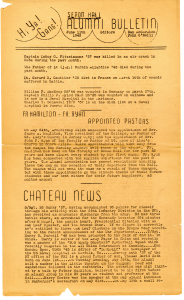 During 1945, much of the public would have learned of Fitzsimmons death from local and national newspapers while Seton Hall alumni servicemen stationed within the United States and overseas would have learned of his death through the Seton Hall Alumni Bulletin 5 , an issue dated 1945 June 11. This newsletter connected alumni back to Seton Hall and to other alumni servicemen. One newsletter describes a Pirate who discovered a fellow Pirate stationed near them and how they made plans to meet up. With these newsletters are correspondence from servicemen to Dan McCormick and John O’Neill, the editors of the newsletter. They discuss fellow Pirates, their memories of Seton Hall, and details about the war that didn’t need to be censored.
During 1945, much of the public would have learned of Fitzsimmons death from local and national newspapers while Seton Hall alumni servicemen stationed within the United States and overseas would have learned of his death through the Seton Hall Alumni Bulletin 5 , an issue dated 1945 June 11. This newsletter connected alumni back to Seton Hall and to other alumni servicemen. One newsletter describes a Pirate who discovered a fellow Pirate stationed near them and how they made plans to meet up. With these newsletters are correspondence from servicemen to Dan McCormick and John O’Neill, the editors of the newsletter. They discuss fellow Pirates, their memories of Seton Hall, and details about the war that didn’t need to be censored.
After this there is no more mention of Captain Roy G. Fitzsimmons. However, his name will reside within the details of the collections at the Carnegie Institution of Washington, Rutgers University, Ohio State University, Seton Hall University, and others.
References
11936-1937 Year Book – Carnegie Institution of Washington, 1937, by Carnegie Institution of Washington. Online: https://archive.org/details/yearbookcarne36193637carn/page/278/mode/2up?q=fitzsimmons
2Ernest Earl Lockhart’s Antarctic Journal, 25 December 1940 to 16 January 1941, n.d. Online at: https://kb.osu.edu/server/api/core/bitstreams/fe6cc4ef-2ac5-5967-86dd-02e4967fcba7/content#nbiological
3Former Explorer Killed: Mass to be Said Tomorrow for Capt. Ray G. Fitzsimmons, May, 13, 1945, New York Times (1923-). Online at: https://www.proquest.com/historical-newspapers/former-explorer-killed/docview/107092484/se-2
4Inglis, Robert Oral History Interview, October 27, 1998, by G. Kurt Piehler and Michael Ojeda, Tape #1, Rutgers Oral History Archives. Online: https://oralhistory.rutgers.edu/alphabetical-index/interviewees/30-interview-html-text/513-inglis-robert
5Office of University Advancement records, SHU-0029. The Monsignor Field Archives & Special Collection Center. https://archivesspace-library.shu.edu/repositories/2/resources/516
6Office of the Registrar records, SHU-0024. The Monsignor Field Archives & Special Collection Center. https://archivesspace-library.shu.edu/repositories/2/resources/330
7The Setonian, SHU-0054. The Monsignor Field Archives & Special Collection Center. https://archivesspace-library.shu.edu/repositories/2/resources/524
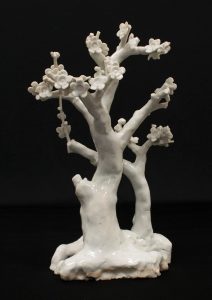
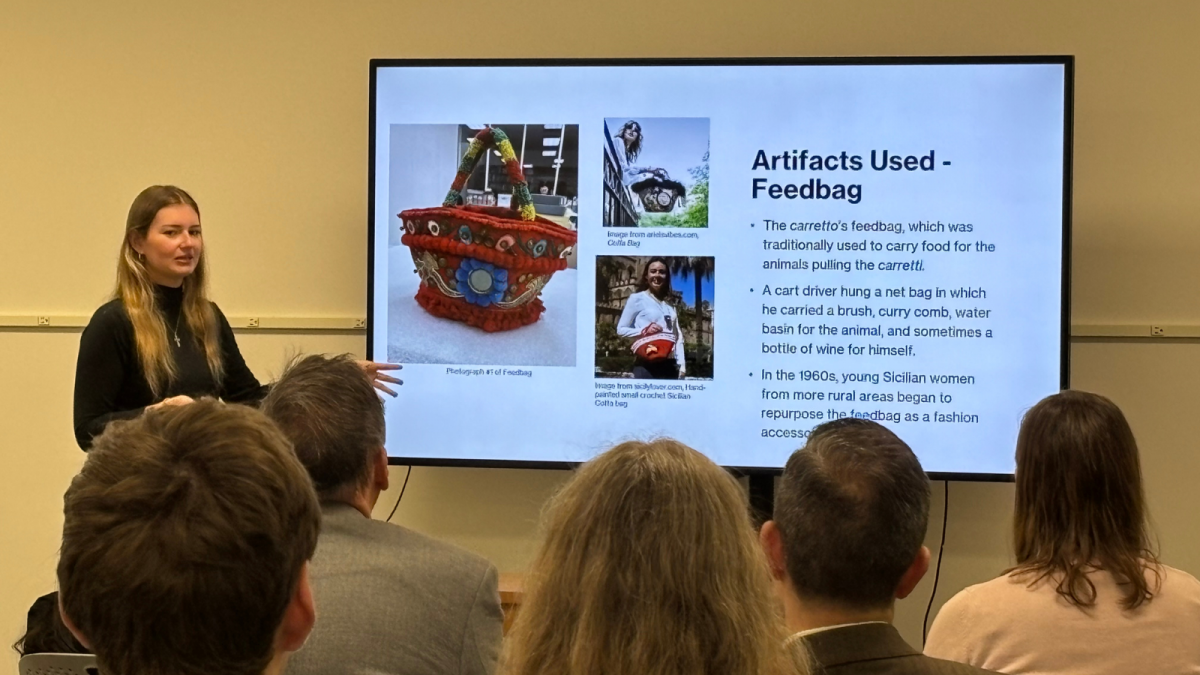
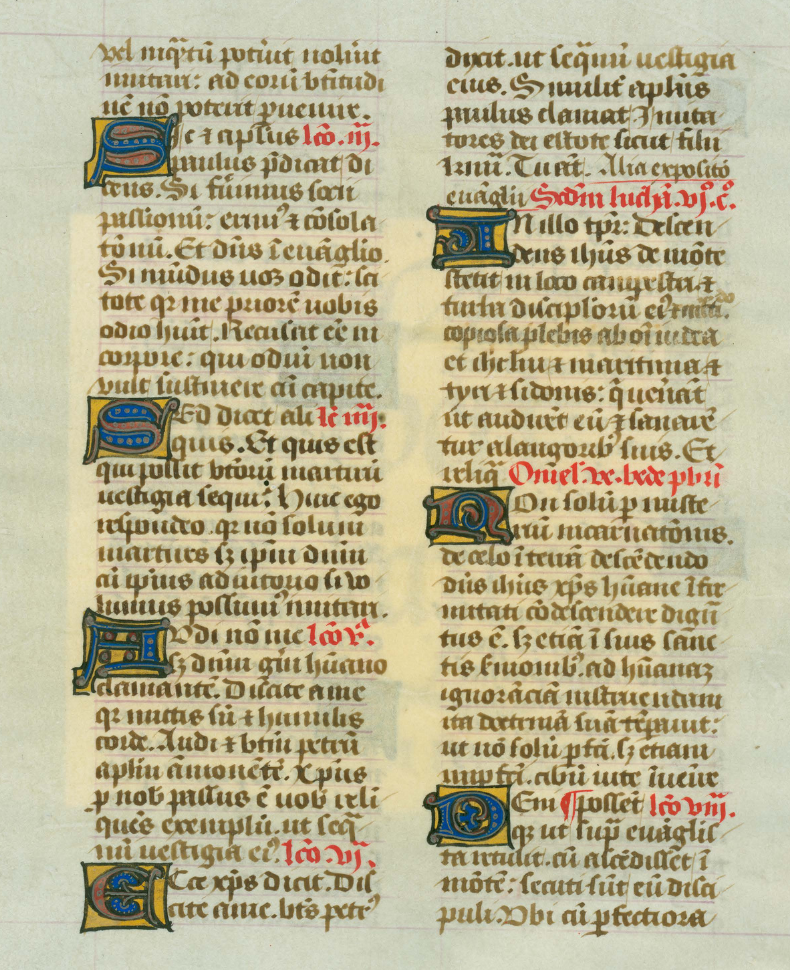
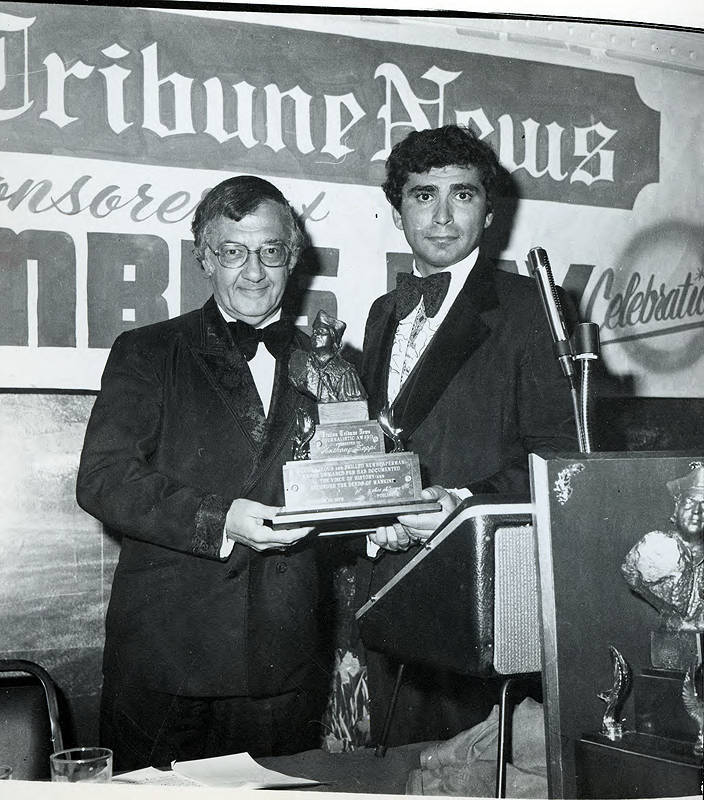
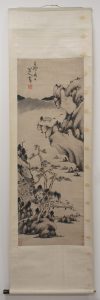
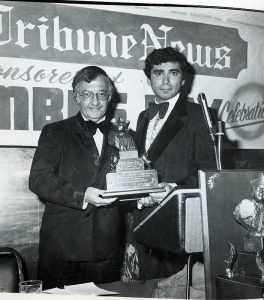
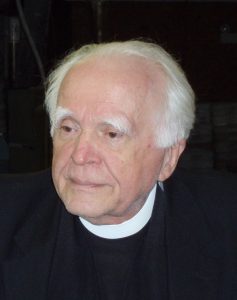
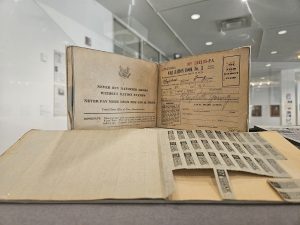 It’s time for the #ArchivesAfterParty!
It’s time for the #ArchivesAfterParty!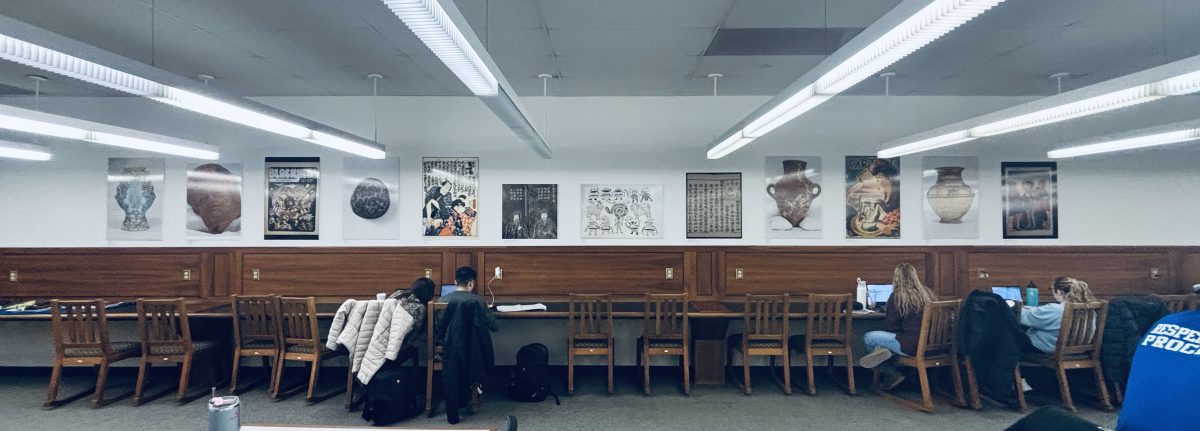
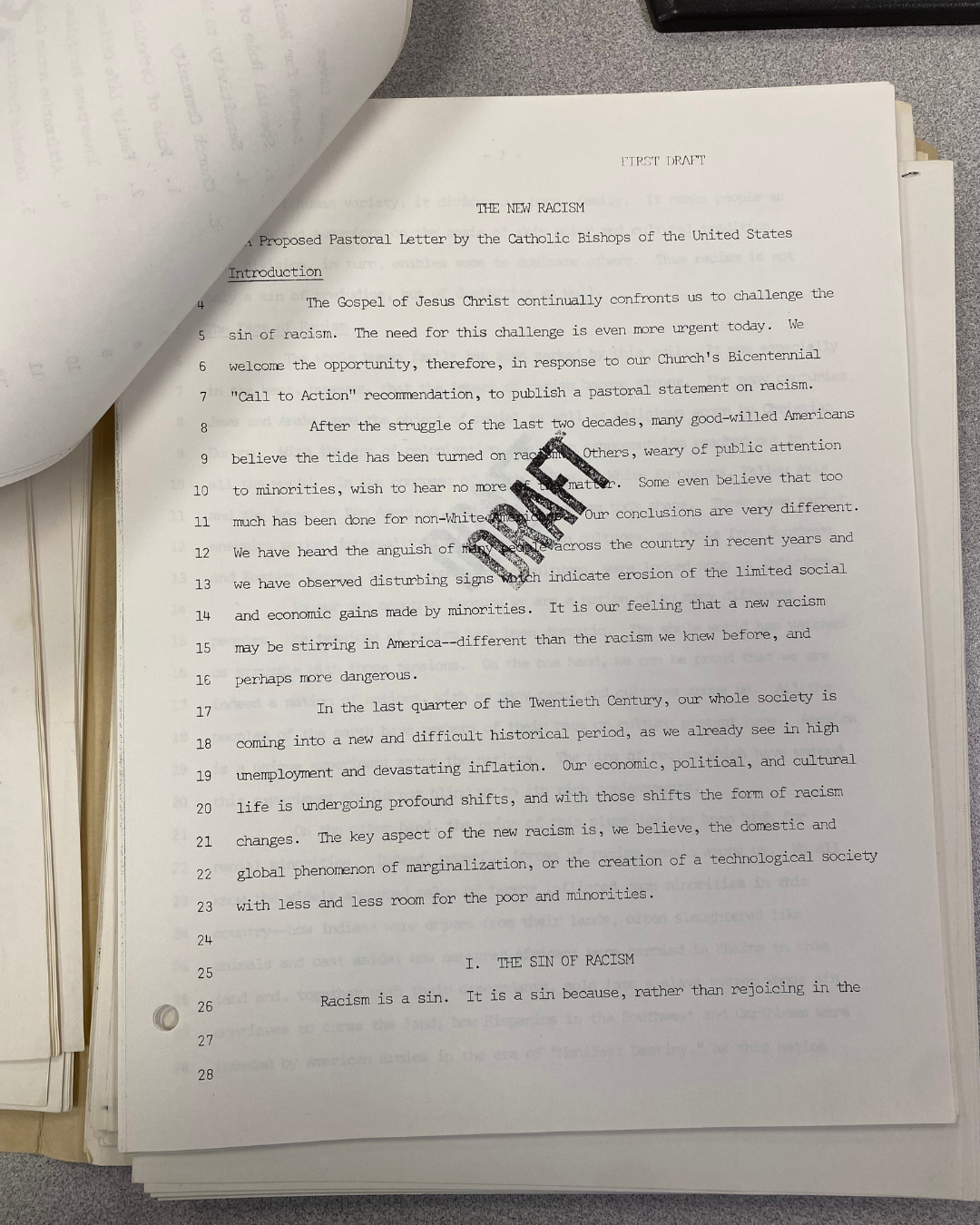
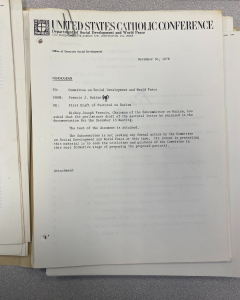
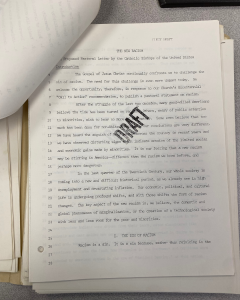
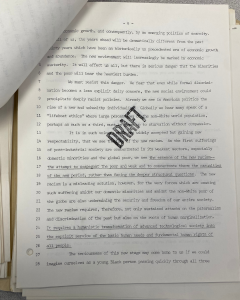

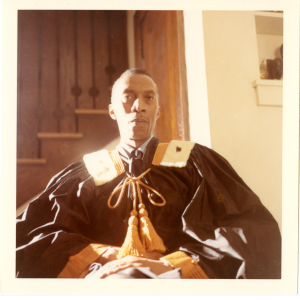 Dr. Hammond returned to the University of Louvain from 1938 to 1939 where he would earn a Licentiate in Philosophy. Dr. Hammond went back to Louisiana to start his teaching career as an assistant professor of philosophy from 1940 to 1945, also gaining a PhD in Philosophy and Social Psychology from University of Laval in his birth country of Canada in 1943. He would then be made chairman of the Modern Languages Department of Southern University in Louisiana from 1945 to 1946, aided by his ability to speak seven languages including Spanish, Italian, Portuguese, Dutch and German.
Dr. Hammond returned to the University of Louvain from 1938 to 1939 where he would earn a Licentiate in Philosophy. Dr. Hammond went back to Louisiana to start his teaching career as an assistant professor of philosophy from 1940 to 1945, also gaining a PhD in Philosophy and Social Psychology from University of Laval in his birth country of Canada in 1943. He would then be made chairman of the Modern Languages Department of Southern University in Louisiana from 1945 to 1946, aided by his ability to speak seven languages including Spanish, Italian, Portuguese, Dutch and German.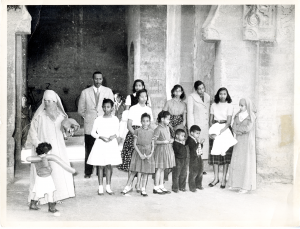
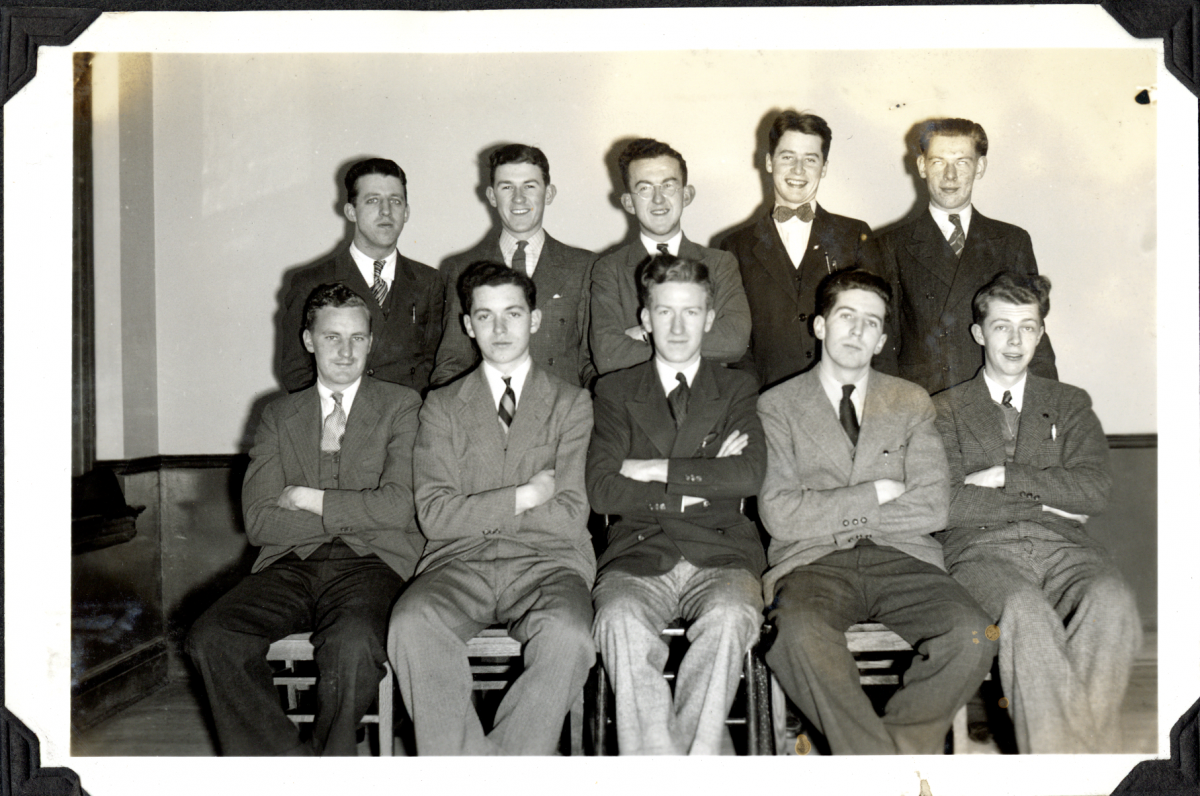

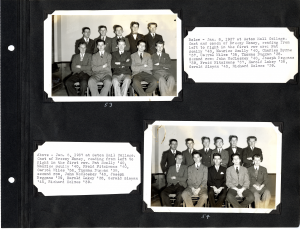
 During 1945, much of the public would have learned of Fitzsimmons death from local and national newspapers while Seton Hall alumni servicemen stationed within the United States and overseas would have learned of his death through the Seton Hall Alumni Bulletin
During 1945, much of the public would have learned of Fitzsimmons death from local and national newspapers while Seton Hall alumni servicemen stationed within the United States and overseas would have learned of his death through the Seton Hall Alumni Bulletin 